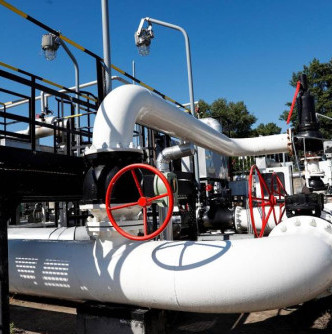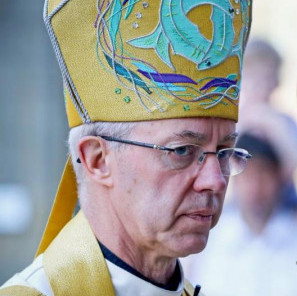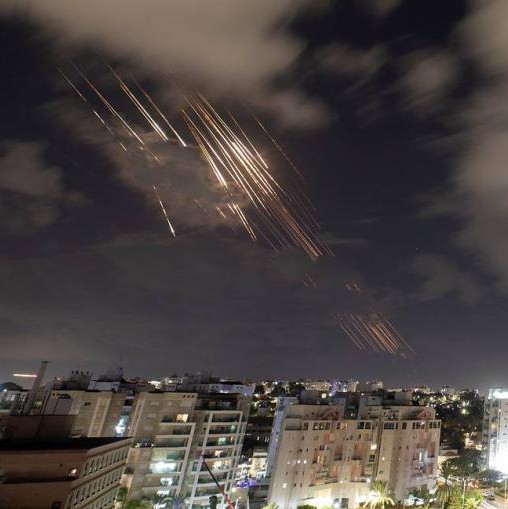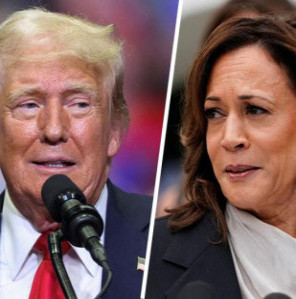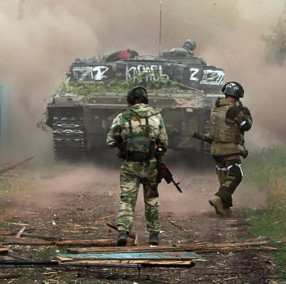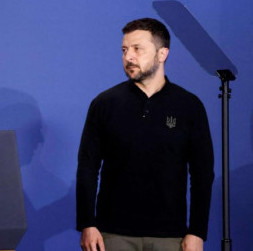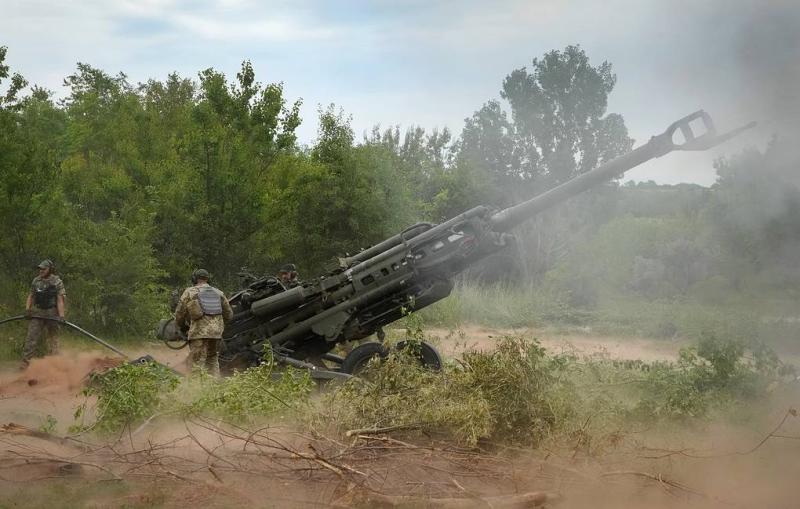
© AP Photo/Efrem Lukatsky/TASS
Top stories from the Russian press on Tuesday, August 23rd, prepared by TASS
Izvestia: European gas prices may soar to $4,000 per 1,000 cubic meters in September
European gas prices may reach $4,000 per 1,000 cubic meters as early as in the first half of September, said experts interviewed by Izvestia. On August 22, gas stock prices passed $3,000 in the European Union as Russia’s Gazprom gas giant announced on August 19 that gas flows through the Nord Stream pipeline would be suspended between August 31 and September 2 due to the maintenance of the last one remaining gas compressor.
"A decline in Russian gas supplies and high demand are the main reasons for the rise in Europe’s gas prices. Given that the heating season is coming and European underground storage facilities aren’t full enough, prices can be expected to grow further. In such a situation, they may hit the $4,000 mark in the first weeks of September," BitRiver External Relations Director Andrey Loboda pointed out.
European gas prices keep rising because market participants have been under pressure for a while amid reports about the risk of the full suspension of Nord Stream 1, Head of Analytical Research at the Iva Partners investment company Dmitry Alexandrov explained.
Europe has no alternative to Russian pipeline gas, Leading Analyst at Freedom Finance Global Natalya Milchakova emphasized. In particular, Germany has failed to sign a contract with Qatar for LNG deliveries because Doha’s demand of a 20-year agreement was unacceptable for Berlin. As for the United States, it is only capable of providing very small amounts of LNG to Europe, mostly to Spain and Portugal who don’t receive Russian pipeline gas, the expert added. According to Milchakova, the only possible option for the EU is to launch the Nord Stream 2 pipeline. This is what will make European gas prices fall dramatically, the analyst said.
Vedomosti: Potential removal of sanctions on Iran unlikely to affect Russia’s interests
The leaders of the US, France, Germany and the UK recently held talks on restoring the Joint Comprehensive Plan of Action (JCPOA), a deal that provides for the suspension of Iran’s nuclear program in exchange for the lifting of sanctions on Tehran. The European Union’s top diplomat Josep Borrell stated on August 22 that the US could be expected to provide a response to European and Iranian proposals later in the week, Vedomosti writes.
The odds are quite high that the Iran nuclear deal will be restored because many countries, primarily the United States, are interested in that, Director General of the Center for the Study of Contemporary Iran Radzhab Safarov noted. The US currently seeks to achieve the major goal of weakening Russia’s capacities on the global stage and it views Russian-Iranian rapprochement as a huge threat.
It is unclear whether the US Republican Party will take advantage of the revival of the Iran nuclear deal to attack the Democratic administration in Washington, said Alexey Davydov, a researcher with the Center for North American Studies at the Russian Academy of Sciences’ Institute of World Economy and International Relations. At the same time, if sanctions aren’t lifted this time, it’s hard to say if they will ever be removed, the expert added.
In the event the sanctions are lifted, Iran’s daily oil production may reach 3-3.5 mln barrels and exports may grow to 1-1.5 mln barrels per day, Commodity Market Analyst at Otkritie Investment Oksana Lukicheva specified. It will not have any significant impact on Russian oil exports because Europe is looking forward to getting access to Iranian oil and those supplies will not overlap with Russia’s, particularly given Europe’s plans to abandon Russian oil and petroleum products in 2023.
Kommersant: Kiev’s allies approve attacks on Crimea
On August 24, Ukraine will celebrate its Independence Day for the first time after the launch of Russia’s special military operation. Independence Day will be preceded by a Crimean Platform summit that will involve NATO Secretary General Jens Stoltenberg on Tuesday. Kiev has recently stepped up attacks on Crimea, encouraged by its allies’ approval to open another front against Russia. Meanwhile, the Pentagon did not rule out that weapons that were being supplied to Kiev would be used for targeting Crimea, describing it as "self-defense," Kommersant writes.
"Attempts to attack Sevastopol and Crimea are becoming more common. As for the use of drones, apart from carrying out strikes, they have another role, which is no less important, collecting intelligence about Russian air defenses and facilitating attacks involving HIMARS systems with a range of up to 300 kilometers. In addition, it’s becoming possible to carry out attacks with Harpoon missiles that have a range of up to 280 kilometers in their Slam modification," military expert Captain First Rank Vasily Fatigarov pointed out. According to him, Western-made aircraft can conduct Harpoon strikes without entering the zone of Russian air defenses. The Crimean Bridge may become one of the targets.
"The main goal of the Crimean Platform event this year will be to make sure that along with the US, who is already willing to engage in a standoff with Russia in Crimea, Western European NATO allies do the same, though they were hesitant about it until recently," editor of the Arsenal Otechestva magazine Alexey Leonkov emphasized.
The expert explained that Crimea might be attacked with HIMARS rocket systems and M270 multiple rocket launchers in use with the British army. Another thing to remember is that Germany handed three MARS multiple rocket launchers to Ukraine. "If European countries follow in the US footsteps, recognizing Kiev’s right to conduct strikes on Crimea, the threat of a full-scale conflict between Russia and NATO will tremendously increase," Leonkov warned.
Nezavisimaya Gazeta: Risk of global food crisis is clearly on the decline
The United States Department of Agriculture’s expectations that the global wheat crop will exceed last year’s has driven stock prices 60% lower than May’s peaks on Monday. Issues related to the export of food products from the Black Sea region have also been resolved, Nezavisimaya Gazeta writes.
"The global food problem has recently been becoming less pressing," Chief Analyst at TeleTrade Mark Goikhman points out. "In fact, the drought that hit some regions of the world in recent weeks has not had much impact on prices. It did not turn into another global problem on an apocalyptic scale," the expert said.
It will take a long time for the food crisis to end and it may last into next year. "However, more tensions are out of the question at the moment. The basic crops that Russia and Ukraine provide to the global market are once again being exported through southern ports in large volumes. If these logistics routes continue to operate normally, the Ukrainian factor will lose its importance though it’s not right to dismiss it entirely. Ukraine’s harvest will clearly be below last season’s levels due to military activities," the expert explained.
"Certain restrictions on the export of Russian food products remain in place even though sanctions don’t ban it directly. However, there are issues with transportation, logistics and export insurance. Restrictions on international payments, the blocking of bank accounts and the isolation of banks from the SWIFT system are also creating difficulties," Goikhman specified. "But the situation can no longer be described as disastrous and globally dangerous," the analyst added.
Vedomosti: Russian Finance Ministry mulling yuan bond placement
Major Russian bond issuers are entering the market with yuan borrowings amid the country’s growing trade with China and a surge in interest in the Chinese currency on Russian trading platforms. Russia’s Ministry of Finance is also mulling a yuan bond placement, Vedomosti writes, citing a source close to the government.
The placement process requires negotiations with China, another source told the paper. Talks are already underway, he said, adding that preparations would take quite a while so a bond placement was likely to happen within a year or two.
It is necessary and timely to acquire such an instrument under the current circumstances. In particular, it would provide the Finance Ministry with an opportunity to attract external financing in a situation where it has no access to Western markets, Chief Analyst at Sovcombank Mikhail Vasilyev noted.
The step is in line with the need to wean the country off dollar dependence and provide investors with an alternative tool to place funds invested in the Chinese currency, Head of the Debt Market Analysis at Otkritie Investment Vladimir Malinovsky added.
Vasilyev believes that Russia’s yuan government bonds may gradually turn into an alternative to American and European instruments as far as the Chinese Central Bank’s reserves are concerned. Such assets will be interesting not just for investors from Russia’s friendly countries, admitted to trading on the Moscow Exchange, but also for individuals, Chief Debt Market Analyst at the Region brokerage company Alexander Yermak stressed.
